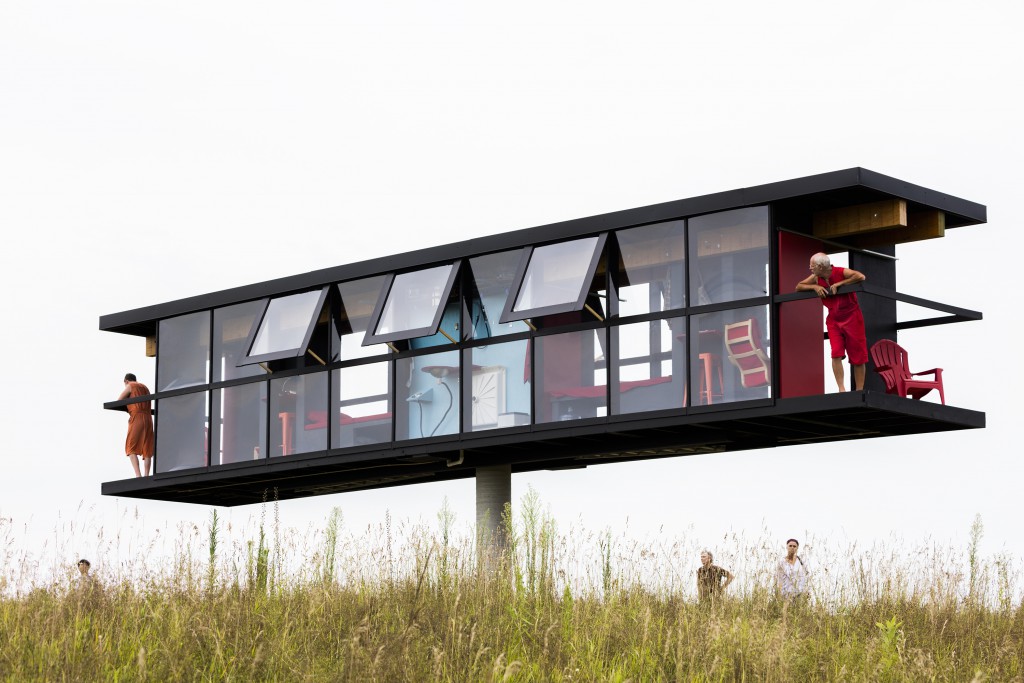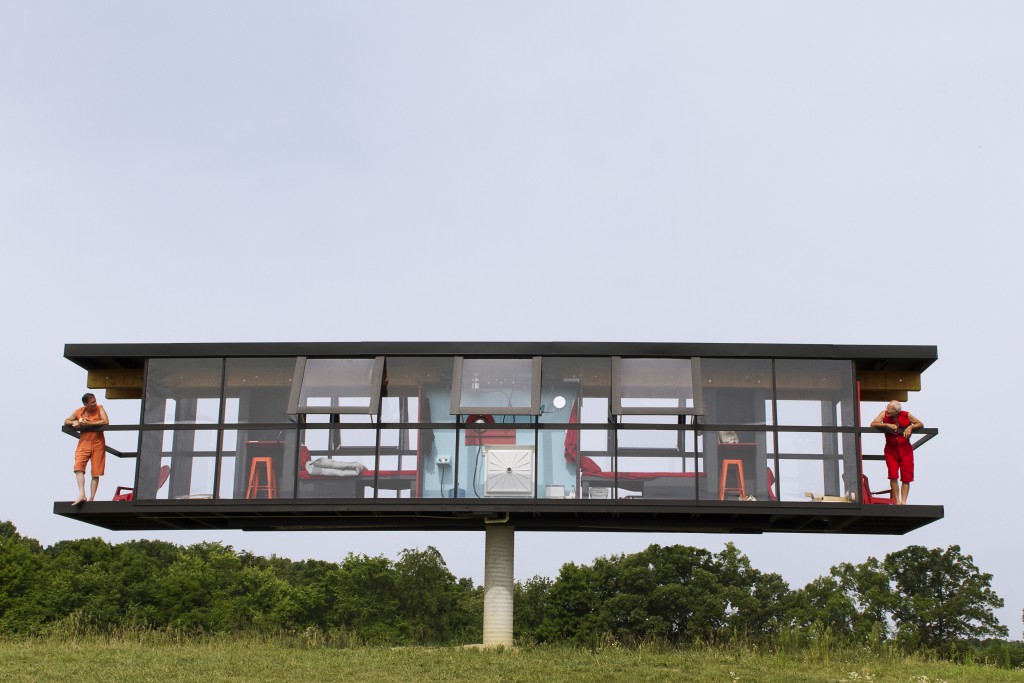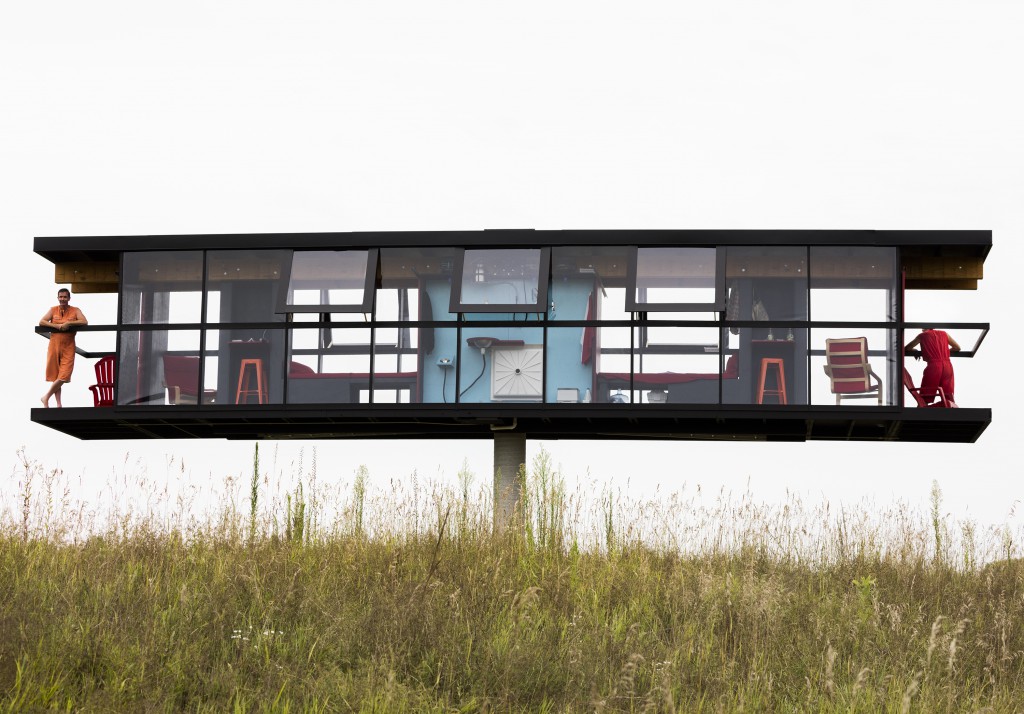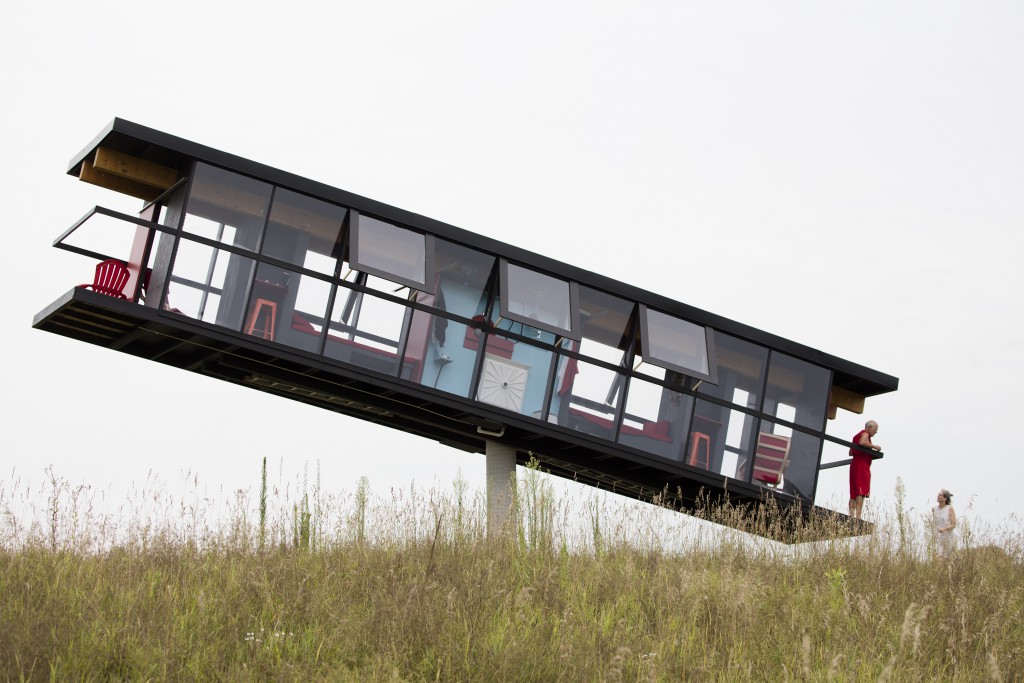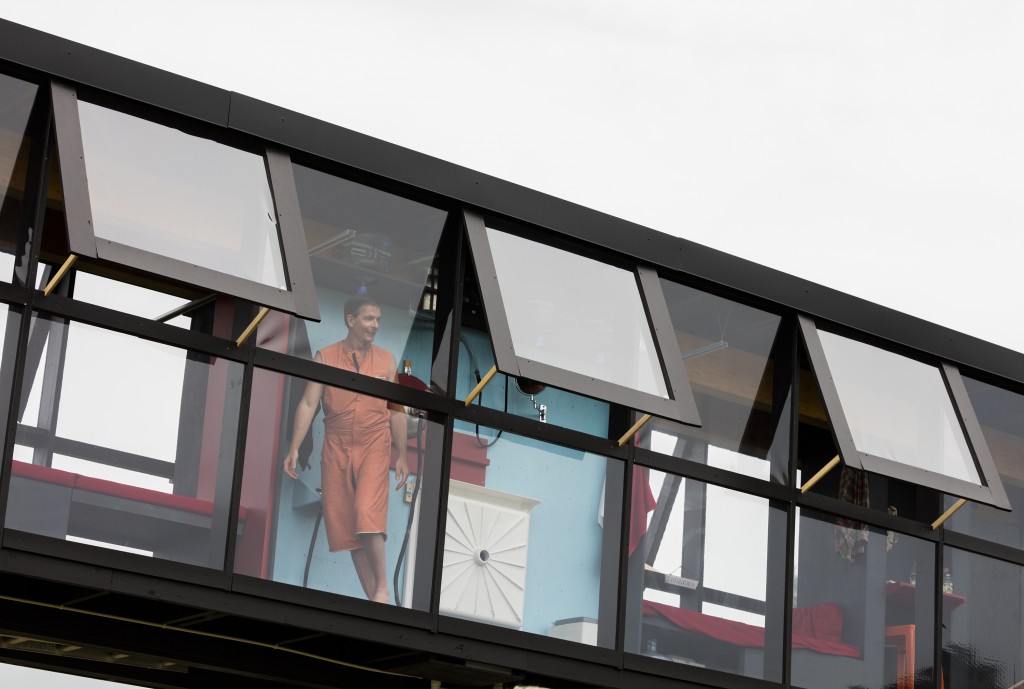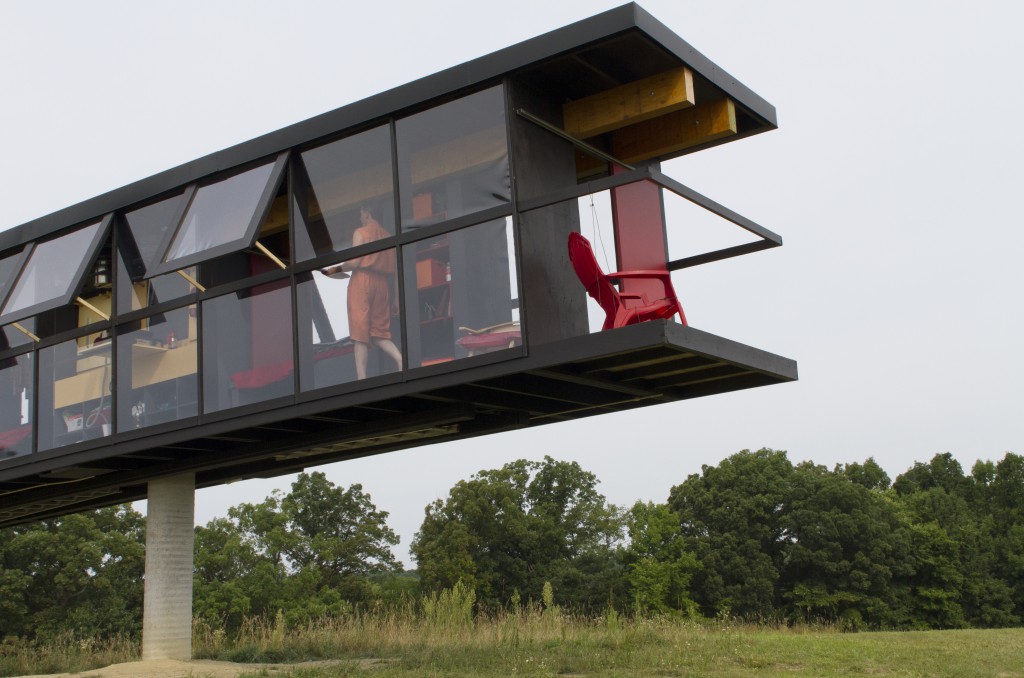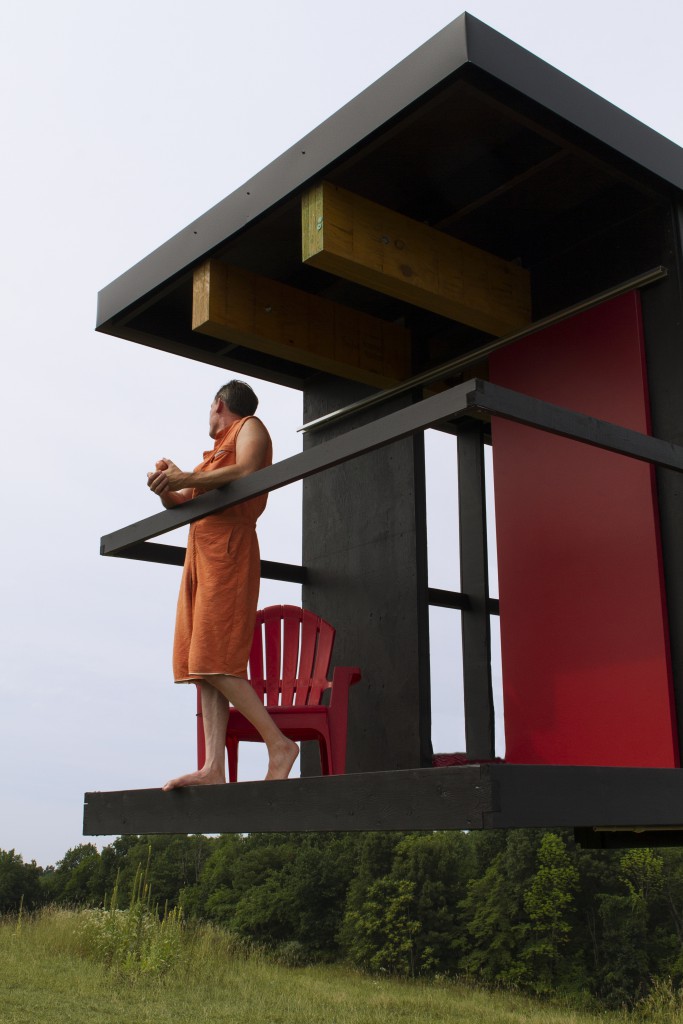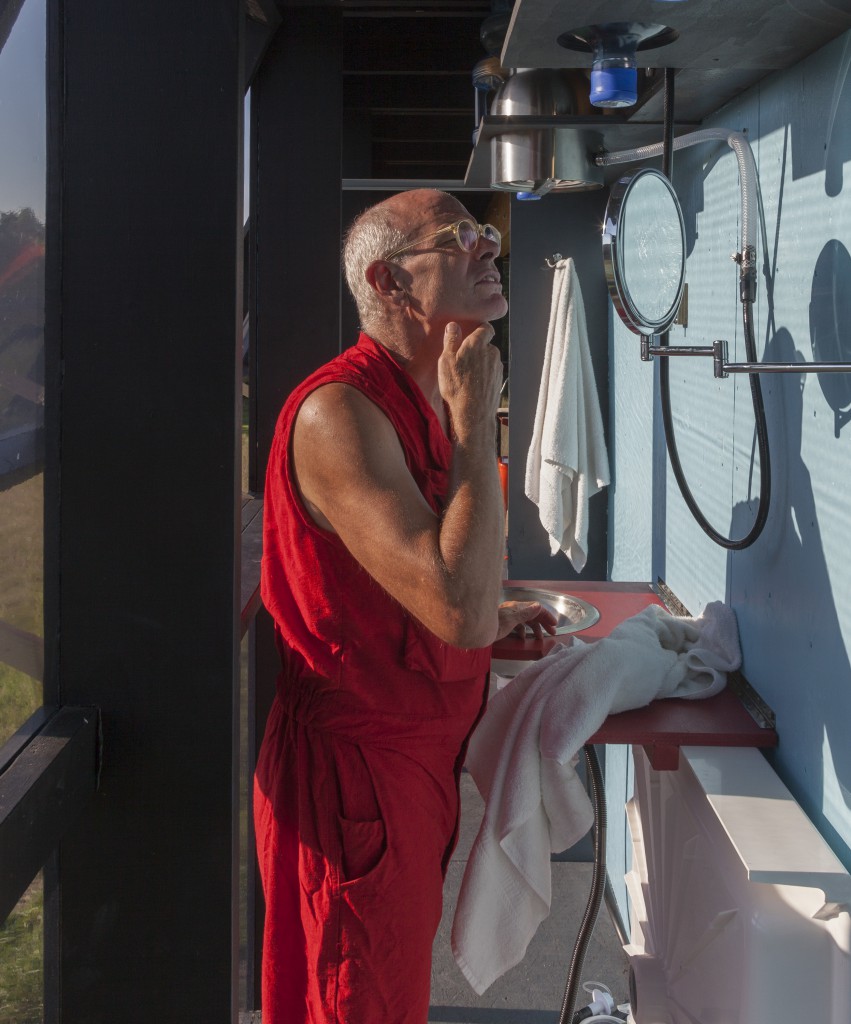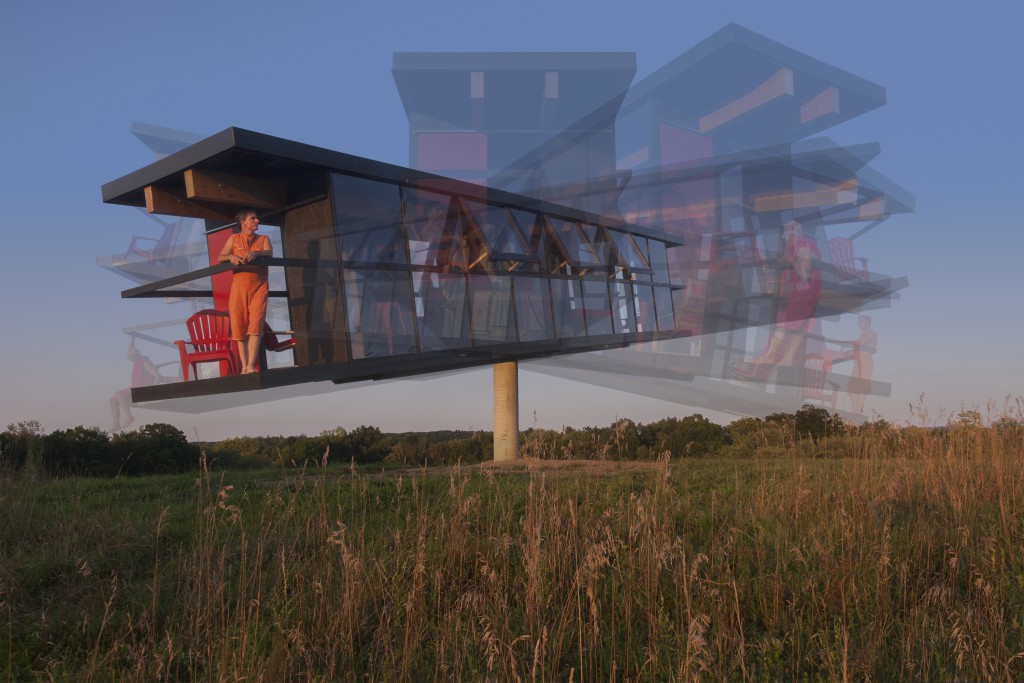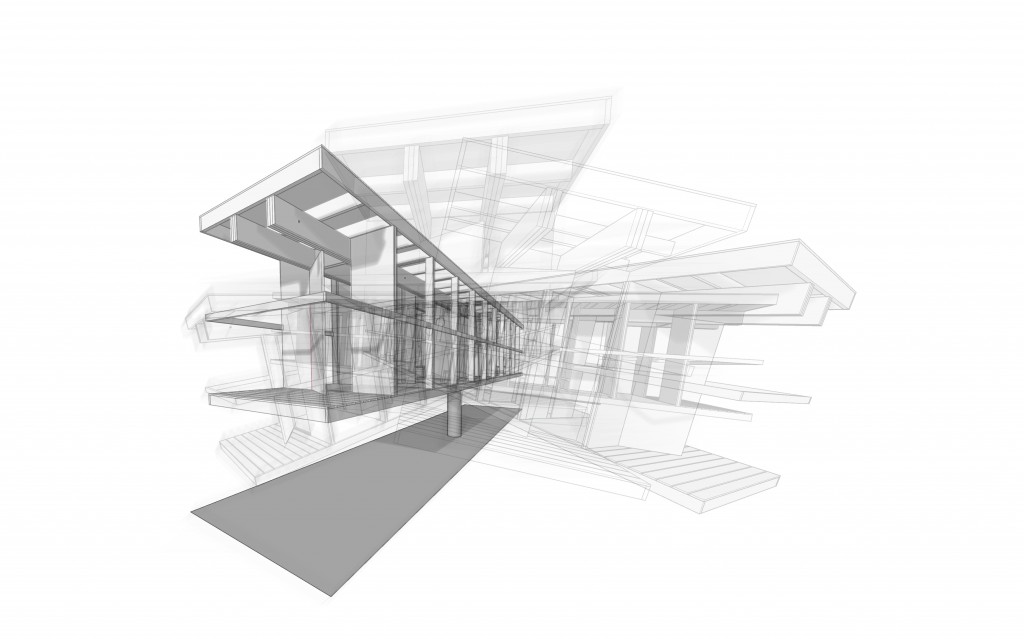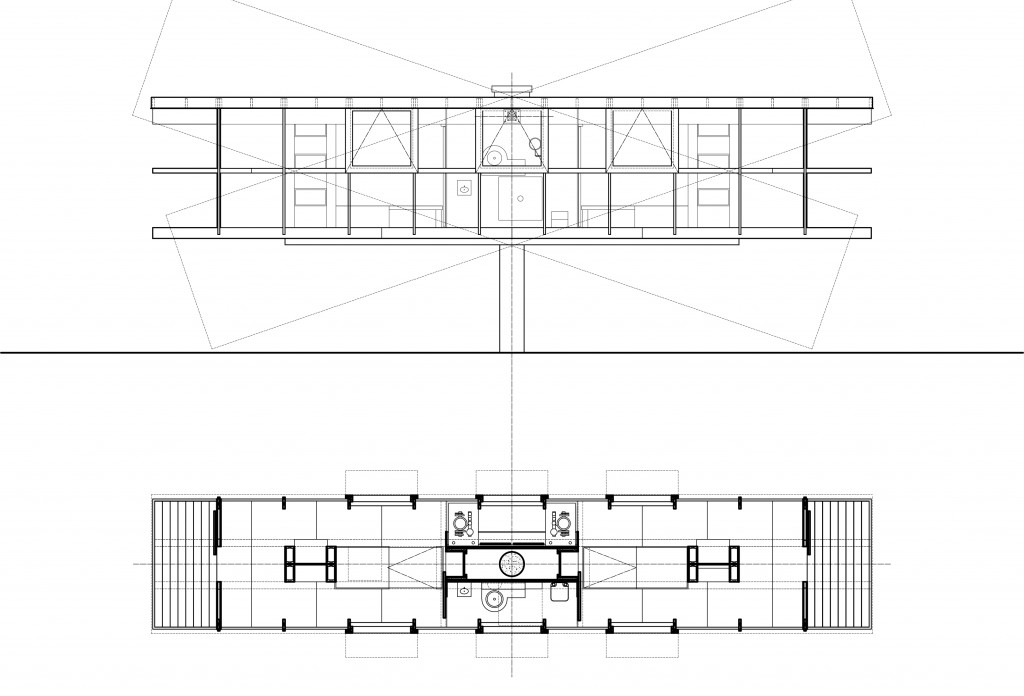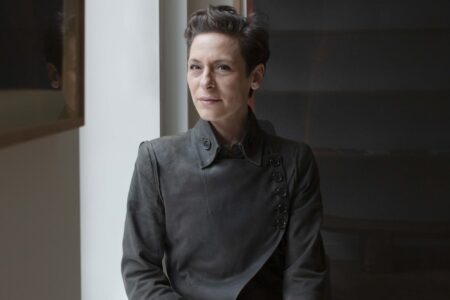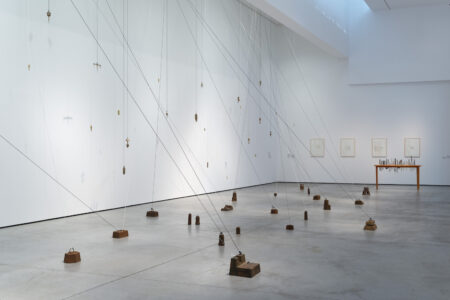ReActor by Alex Schweder & Ward Shelley
Investigating how constructed environments can affect and be affected by human interaction, frequent New York-based collaborates Alex Schweder (featured on tlmagazine.com earlier this year) and Ward Shelley conceive ReActor. Mounted in the expanse of Omi sculpture park – set within the bucolic landscape of the Hudson Vallery and at a 2.5-hour drive north of Manhattan, the 13.4 by 2.4-metres house-like structure balances off of a central 4.5-metres axis. Conditioned by both external and internal forces – the movements of two inhabitants – ReActor tilts, rocks, sways, and turns a full 360-degrees. Inside a mirrored interior provides both dwellers with the essentials: a bed, dining table and washing station. Both Schweder and Shelley spend periods of five days living within the construction. Occupying either side of ReActor, each person’s daily routine is influenced by the movements of the other. If one leans over the edge of an extruded balcony at on end, the other has to do so as well to ensure stability. Perhaps as a physical metaphor for the shared responsibility of cooperation, Schweder and Shelley’s latest example of “social relationship architecture” expressed as “performative architecture” builds on earlier collaborative projects like the Counterweight Room – in which two performers rely on the tug-and-pull of each other’s weight to interact with a vertical interior. After this, their first outdoor work, the duo hopes to continue their exploration of how constructed surroundings can impact relationship dynamics and vice versa. The correspondence between sculpture, architecture and interaction takes the notions of praxis, high and low art, as well as conceptual expression to new echelons.
ReActor is part of the 2016-17 Architecture Omi exhibition WOOD: From Structure to Enclosure.
2-Day Special Appearance: 24-25 September
5-Day Performance: 6 – 10 October
Architecture Omi’s Field 01
Omi International Arts Center
1405 Country Route 22, Ghent, New York
Sculpture Park Open during Daylight Hours
